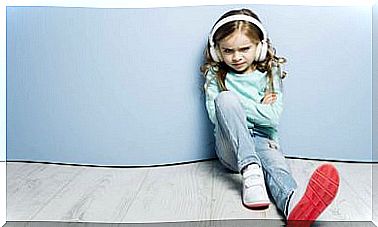What Is Functional Behavior Analysis?

The functional analysis of behavior looks for what the purpose of the behavior is, hence its name “functional”. Instead of looking for a cause, a trigger, an idea or a representation. The behavior obeys a function. Whenever we do something, it obeys a reason and very different behaviors in its tophography (form) may be pursuing the same function.
Imagine that a child wants to demand the attention of his mother and for this he has tantrums, he gets angry when his brother is there, he says that he is sick at school so that they come to look for him, he has episodes of enuresis and also selective mutism. For the functional analysis, all these are different behaviors that pursue the same function: to attract the attention of his mother.
To get to know what function a behavior obeys, the clinician or therapist must understand the antecedents and consequences that occur when performing a certain problem behavior, to adequately reinforce another complementary behavior or learn a new, more adaptive behavior. The challenge is to observe the global behavior of an individual and deduce his function: what does it allow him to obtain?

What is functional analysis based on?
Functional analysis is an interactive model that connects problem behavior with the patient’s cognitions and emotions in a given situation. With its antecedents on the one hand and its consequences on the other.
There is always an interplay between emotions, behaviors, and cognitions. Functional analysis aims to understand the individual as a whole. Thoughts, images or emotions are also part of the behavior.
Therefore, we must identify the explanatory variables (the independent and moderating variables) involved in the problematic behaviors (dependent variables) of an individual in their current and past life context.
The intervention in functional analysis
The intervention based on functional analysis seeks to replace the behavior identified as a problem with another more appropriate behavior. As a result, functional analysis is not a restriction system intended to “pinch” or “constrict”. Rather, you want to understand the intrinsic logic of a behavior.
The approach is to look for what the purpose of the behavior is, hence its name “functional”, rather than looking for a cause, a trigger, an idea, a representation. Behavior has a function. It serves something. This approach starts from behavior to understand its consequences through an observation and analysis of the final situation.
Psychological cases according to the functional analysis of behavior
It is thanks to this conceptualization of cases that one will be distinguished from the categorical approach (1 pathology = 1 unique treatment). Rather, he wants to understand the intrinsic logic of a behavior and the individual as a whole, giving vital importance to the environment in which it develops.
The functional analysis is characterized by prioritizing the following aspects in the approach to a clinical case:
- Identification of complaints made by the patient.
- Data collection by direct observation and / or by the person himself (we will create observation grids) allowing the passage to establish a baseline. Current knowledge, a formulation of assumptions about origin and maintenance over time, is taken into account.
- Prediction of the techniques to be used derived directly from these hypotheses. It is discussed with the patient to choose a technique and application modality to change the problem behavior.
- Implementation of the therapeutic project is the application of the chosen techniques. If what we have implemented has no impact, we adjust our theory and our therapy.
During this stage, therefore, the therapist and the patient will explore the problem together in its diachronic dimension (history of the problem) and in its synchronic dimension (here and now).
Functional analysis: history of the problem
In functional analysis it is crucial to know the history of the problem and the patient. We will ask questions about the past, up to childhood if necessary and try to understand how the disorder appeared. In these stories, we will look for the biological / genetic origins of your disorder, a developmental, family, social, or cultural origin.
The agoraphobic patient remembers very well when he panicked outside his home. Other disorders take hold more insidiously: depressive suffering, generalized anxiety disorder, etc.
Often times, the disorders do not appear at any time in life. They appear at times when our coping strategies are undermined: times of stress, exhaustion, sometimes trauma.
The history of the person as a whole
In the functional analysis we try to see how the person worked before and what are the characteristics of their personality : pessimistic, optimistic, anxious, carefree, trajectory, schooling, etc. You try to build an image of what the person is.
It is necessary to know the medical component : to know if there are factors of genetic vulnerability, but also the history of coping with the disease experienced in the family. All this has been able to cause vulnerabilities in the patient and lead to predisposing or precipitating factors.
Functional analysis: analyze the current state of the patient
It is the dimension of “here and now”, when the patient seeks help. Here the analysis is quite quantitative as we will ask you to answer questionnaires or keep an agenda to promote self-observation.
It will be necessary to determine the starting point of the disorder for a better objectivity in the differences of the pretreatment and posttreatment results. In most cases we will try to know for each problem behavior:
- Frequency.
- Intensity.
- Duration.
- Its different forms of expression.
These measures and information will be useful in more ways than one, they will help us understand the dynamics of the problem and the vicious cycles that maintain them. They also help to compare the subjective experience of the patient with a quantitative measure.

What we evaluate with functional analysis
Problematic behaviors are assessed, but also behaviors that are not. Behaviors that are not indicate possible resources for the patient. Sometimes situations that seem very close to each other can lead to behavior problems in one case and not the other.
For example, a person starts yelling in class when assigned to group work. We could say that she screams when she doesn’t want to work with others, so she shouldn’t do group work. But we may not have taken into account all the times she did group work and did well. The key factor is perhaps elsewhere: noisy atmosphere, lack of significant companions, visible presence of fatigue, etc.
conclusion
Therefore, the psychotherapeutic treatment proposed in behavior therapy is derived from functional analysis and not from simple diagnosis.
Functional analysis already has intrinsic therapeutic virtues because it allows the person to begin to understand the mechanisms that seem to trigger and maintain their problems.









